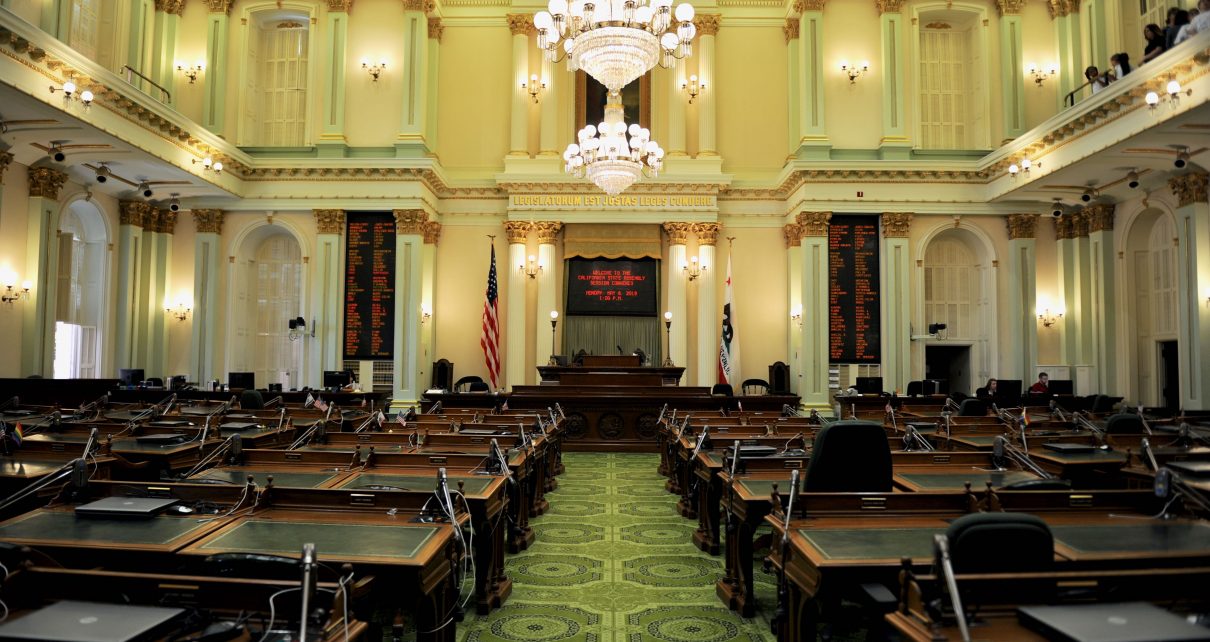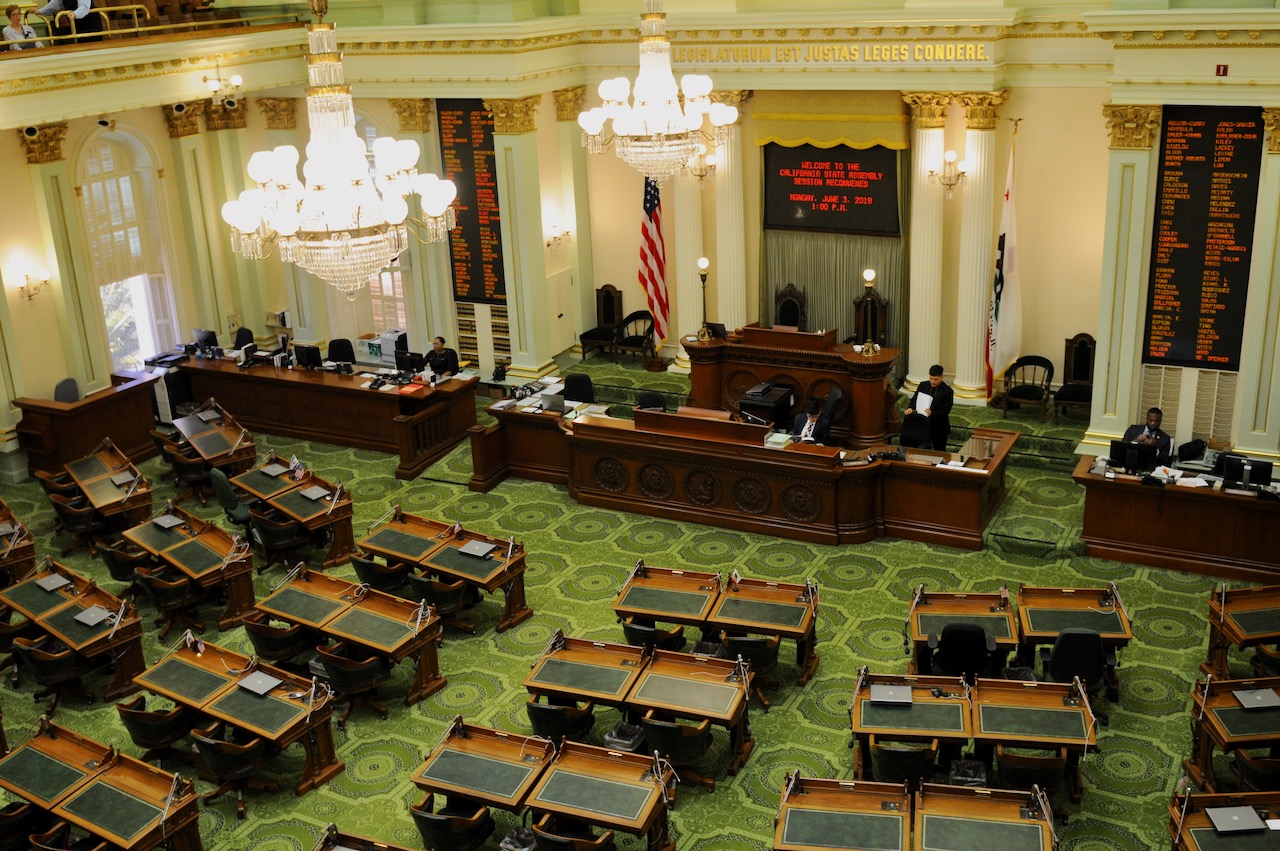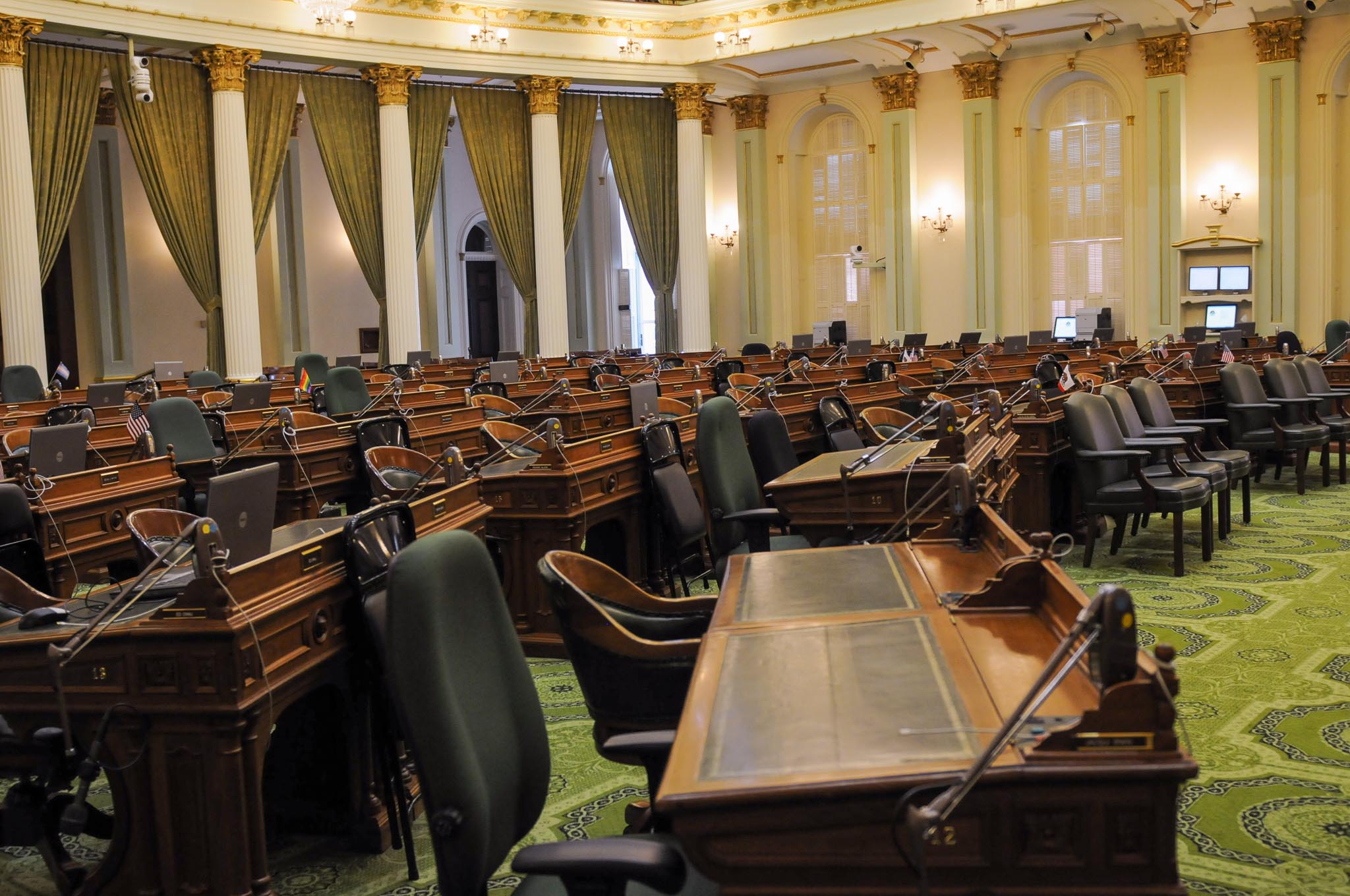
California Assembly Chambers. (Photo: Kevin Sanders for California Globe)
Some Key Differences between the Assembly and Senate in the CA Legislative Process
For students of the process, there are some interesting differences
By Chris Micheli, September 30, 2019 2:15 am
There are a number of differences between the Assembly and the Senate in terms of the California legislative process, many of which are minor in nature. However, for students of the process, as well as those involved in the State Capitol, there are some interesting differences. Essentially, the two houses follow similar rules because they basically have the same roles in the legislative process. Nonetheless, there are several differences of note.
Leadership
The Senate is led by the President pro tempore and the Rules Committee, whereas the Assembly is led by the Speaker. In the Senate, the Rules Committee generally has the same powers as the Speaker does in the Assembly. The Senate minority leader picks vice chairs and committee assignments, whereas in the Assembly the minority leader makes suggestions.
Confirmation of Appointees
The Senate confirms specified gubernatorial appointments. In the Assembly, this role is limited to the confirmation of nominees to fill a vacancy for a constitutional office.
Members’ Office Budgets
Senate offices are given a fixed number of staff positions that they can fill and a small budget allocation; on the other hand, Assembly offices are given an office budget from which they pay staff salaries and expenses.
Jurisdiction of Committees
Many committees are the same between the two houses, both in name and in subject matter jurisdiction. However, there are a few differences. For example, in the Assembly, worker’s compensation bills go to the Insurance Committee; however, in the Senate, they go to the Labor & Industrial Relations Committee. The Assembly has 31 committees, while the Senate has 22 committees.
Appropriations Committees
Senate Appropriations Committee allows support and opposition testimony at hearings even where the author waives presentation. The Assembly generally does not. Regarding their suspense files, the Assembly committee goes through bills by subject matter, while the Senate committee goes through bills by author. In addition, the Assembly votes to pass or announces which bills are held on suspense, while the Senate only votes on bills it will pass off of the suspense file.
In addition, the Senate has Rule 28.8, which allows the Appropriations Committee Chair to place a bill on the second reading file without a committee vote if the Chair deems the bill to not have significant state fiscal impact. The Assembly Appropriations Committee has no such rule.
Budget Subcommittees
All of the Senate subcommittees meet at the same time on Thursday morning overlapping with rare exception, while the Assembly subcommittees meet on different days and times with almost no overlap.
The budget subcommittees have the following subject matter jurisdictions:
Education (Senate Subcmte #1 and Assembly Subcmte #2)
Resources, Environment, and Transportation (Senate Subcmte #2 and Assembly Subcmte #3)
Health and Human Services (Senate Subcmte #3 and Assembly Subcmte #1)
State Government (Senate Subcmte #4 and Assembly Subcmte #4)
Public Safety and Judiciary (Senate Subcmte #5 and Assembly Subcmte #5)
Bill Introductions
Beginning in 2017, the Assembly allows a maximum of 50 bills to be introduced by each member during a 2-year session, while the Senate allows a maximum of 40 bills to be introduced by its members during the same period of time.
Bill Referrals
The Senate does not refer bills that only call for studies or reports. The Assembly does refer such measures to committee. As a general policy, the Assembly Rules Committee does not hear resolutions weighing in on matters of foreign policy. The Senate has no such limitation.
Amendments
The Assembly requires amendments to be submitted by 5 pm or the close of session the day before a deadline. The Senate does not have the same rule.
The Assembly has a different interpretation of the 30-day wait period contained in Art IV. Sec 8(a) of the Constitution than the Senate. Once a bill has been referred to committee, the Assembly permits pre-committee author’s amends to bills within the 30 day period, while the Senate does not.
The Assembly imposes a deadline for amendments to spot bills in order for those bills to be referred to committee. The Senate does not have such a rule.
Floor Actions
The Senate records votes by voice vote, while the Assembly records votes electronically
The Assembly allows its Members to add or change votes after the vote has been announced, so long as the final vote is not impacted. The Senate does not allow that, except for the President pro Tempore and the Republican Leader. So, on the Assembly Floor, members are allowed to add on or change their vote for up to about 15 minutes after adjournment so long as it does not change the outcome on the bill.
The Lt. Governor is the President of the Senate, which is primarily a ceremonial role, except in the case of a tie vote. The Lt. Governor can break such a tie. In the Assembly, the motion or bill fails in the case of a tie vote.
Floor Analyses
The Senate floor analyses list support and opposition positions, but the Assembly does not list any positions on their floor analyses.
Inactive Files
Bills taken off of the Senate Inactive File are returned to second reading. In the Assembly, bills previously on Third Reading that are moved to the Inactive File are subject to a “one-calendar-day notice” when removed from the Inactive File and returned to Third Reading.
Motions
In the Assembly, there must be a second to a motion. In the Senate, there is no need to second a motion for bills in committee. So, in the Senate, only a motion is required.
Chris Micheli is a Principal at Aprea & Micheli. Inc. in Sacramento. He is an adjunct professor of law at McGeorge School of Law. The author would like to thank for their contributions the following individuals: Rick Simpson, Senator Hertzberg; Dotson Wilson, Assembly Chief Clerk and Parliamentarian; Diane Boyer-Vine, Legislative Counsel; former legislative staffers Jim Richardson and Deborah Gonzalez.
- Registration for Securities Investments - April 26, 2025
- Disaster Indemnity for State Militia - April 25, 2025
- General Provisions for Commencing Civil Actions - April 24, 2025




